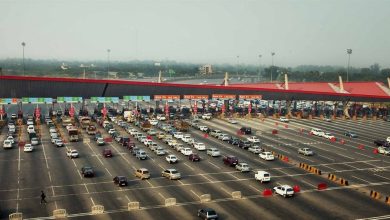Navigating Hawking Zone Dilemmas in Nagpur

Hawking Zone in Nagpur (Buldi, Jaripatka, Nandanvan): In the bustling city of Nagpur, a clash of interests emerged as the hawkers’ associations and the Town Vending Committee (TVC) found themselves at an impasse. The heart of the matter? The contentious choice of locations for hawking zones. Let’s delve into the twists and turns of this urban saga that unfolded during the recent TVC meeting.
Hawkers’ Stand: The Buldi Battleground
Buldi Main Road: A Hotbed of Contention As the curtains lifted on the discussion, the hawkers’ representatives made a fervent plea for a hawking zone on Buldi Main Road. The fervor escalated as Nandanvan Main Road and Jaripatka Area were thrust into the spotlight. The drama unfolded as these preferences clashed head-on with the recommendations of the hawk-eyed panel assigned to finalize the hawking zones.
TVC’s Traffic-Based Dilemma
Traffic Flow Analysis: A Road Less Traveled The committee, armed with a thorough study of traffic patterns, stood firm against endorsing hawking zones on Sitabuldi Main Road, Nandanvan, and Jaripatka Main Roads. This decision, rooted in the meticulous examination of the area’s traffic dynamics, set the stage for a heated discourse during the TVC meeting.
The Decisive Showdown: Voting Day
Chairman’s Gavel: TVC Meeting Under Municipal Commissioner’s Purview At the helm of the TVC meeting was Municipal Commissioner Abhijit Chaudhary, steering through diverse perspectives. In a democratic twist, the hawkers’ association’s impassioned plea collided with the committee’s resolute stance. The battleground shifted to a vote, with 10 committee members standing against the proposed hawking zones and 6 in favor. The verdict resonated through the room—no hawking zones at Buldi, Nandanvan, and Jaripatka.
Flashback to 2016: The Hawking Zone Map Unveiled
Market Department’s Cartography Rewinding to 2016, the Nagpur Municipal Corporation’s market department divided the city into three zones, envisioning a tapestry of hawking zones. A total of 115 zones were initially proposed, but objections prompted a recalibration. The final canvas featured 53 hawking zones, with 15 locations, including the prominent Sitabuldi, Nandanvan, and Jariptka main roads, designated as strict no-hawking zones.
[VARIABLE1] – A Crucial Perspective
In the midst of this urban chess game, the importance of recognizing the needs and challenges faced by both hawkers and city planners cannot be overstated. Finding a middle ground that respects both commerce and traffic dynamics is imperative for the sustainable growth of the city.
FAQs – Unraveling the Hawking Zone Puzzle
- Why did the committee oppose hawking zones in specific areas? The committee based its decision on a comprehensive traffic flow study in those locations, prioritizing smooth traffic movements.
- How were the hawking zones initially selected in 2016? The Nagpur Municipal Corporation’s market department divided the city into three parts, proposing zones based on a percentage distribution strategy.
- What led to the reduction in the number of hawking zones from 115 to 53? Objections from various quarters prompted a revision, ensuring a more agreeable and balanced distribution of hawking zones.
- Why were specific main roads declared as no-hawking zones? The decision was rooted in maintaining the integrity of major traffic arteries, safeguarding the smooth flow of vehicles.
- How does the democratic voting process work in TVC meetings? In TVC meetings, committee members express their stance through voting, with the majority determining the final decision.
- What steps are being taken to address objections to the designated hawking zones? The municipal authorities are actively reviewing objections, seeking a harmonious solution that aligns with both city planning and vendor interests.
A City in Flux
As Nagpur grapples with the evolving dynamics of urban development, the hawking zone discourse symbolizes the delicate balance cities must strike. Navigating through objections, traffic concerns, and democratic processes, the city aims for a future where commerce and order coexist harmoniously on its streets.









